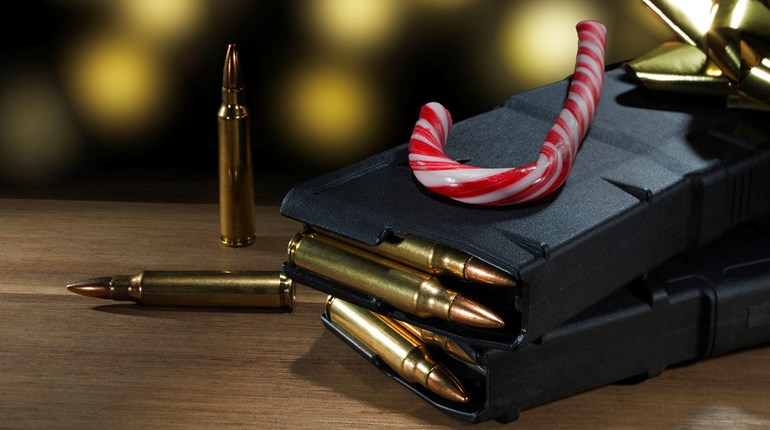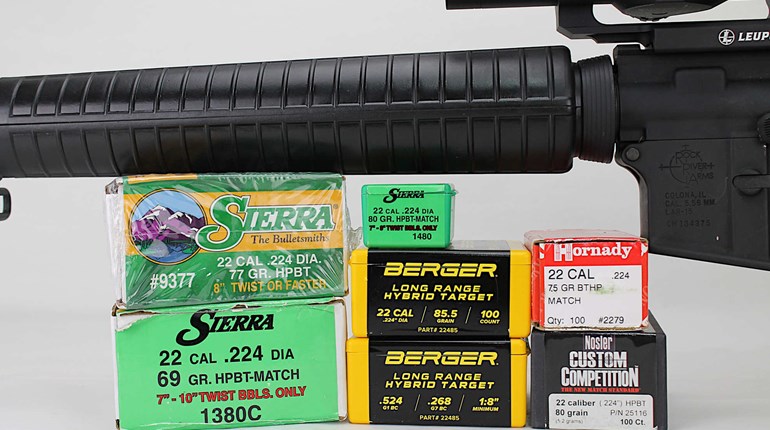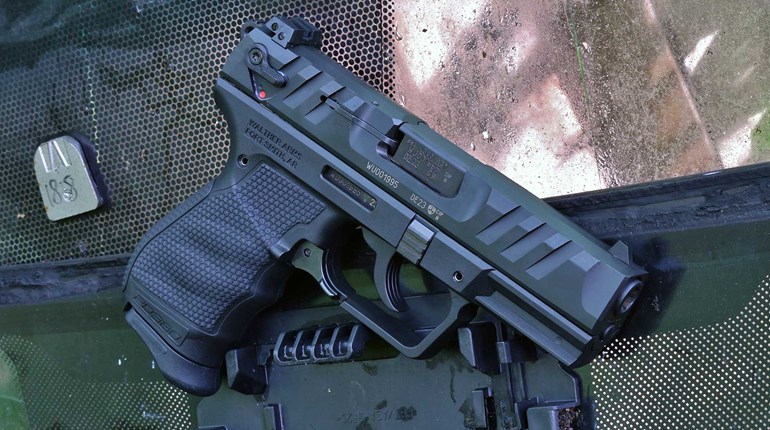
When Michael Faw, media relations manager for Crimson Trace, called to ask if I’d join him and some other writers on a coyote hunt in Montana, the answer was a no-brainer. We’d be camping out under the Big Sky on some ranch you can’t see the end of, even when you glance at the horizon, near Glasgow, Mont. And we’d be using a new wireless Crimson Trace green laser called the LiNQ attached to Smith & Wesson’s Model M&P15 MOE Mid Magpul Spec Series modern sporting rifle.

This ticked so many politically incorrect boxes that I had to say yes. After all, this was an opportunity to test new gun gear and to use a semi-automatic rifle many in the media and politicians on the left want to ban—even though it’s a very normal thing to own and use for hunting, sport and self-defense.
From 1990 through 2014 (remember, Colt began selling AR-15s to American consumers in 1963) the National Shooting Sports Foundation (NSSF) estimates that American citizens purchased more than 12.2 million modern sporting rifles.
What are these millions of Americans using them for? An NSSF survey found that about a quarter of hunters (27 percent) said they used an MSR to hunt with at some point. On this Montana coyote hunt, I was using an MSR chambered in 5.56 mm (.223), but there are many MSRs chambered in .22, 6.8 SPC, .308, .450 Bushmaster and about a dozen others calibers. Upper receivers for pistol calibers, such as 9 mm, .40, and .45, also are available. There are even .410 shotgun versions. So, more and more, MSRs are becoming ideal for hunting many different game species.
- Other common uses are home defense and fun at the range. An NSSF-sponsored survey attempted to define the average MSR owner:
- Nine out of 10 owned a handgun prior to acquiring their first MSR, and 34 percent of those under age 35 owned a paintball gun before owning their MSR;
- Nearly half (44 percent) of MSR owners are current or former military or law enforcement members;
- 51 percent of MSR owners have a shooting-range membership;
- Eight out of every 10 MSR owners purchased their MSR new;
- 39 percent of all MSR owners purchased their most recent MSR at an independent retail store, with the average purchase price being $1,083; and
- Three out of every four MSRs most recently purchased were chambered in .223/5.56 mm
So, more and more, MSRs are becoming ideal for hunting many different game species.Given that I’m a resident of New York, a state where so-called “assault weapons” are illegal for sale (New York state includes MSRs in its expansive list of banned “assault weapons,” as well as semi-automatic shotguns that have a pistol grip and other firearm styles), carrying an MSR (in this case, an AR-15) made me feel free. Something relaxes in you when you’re suddenly out of reach of the sticky bureaucratic fingers and closed minds of gun-ban politicians.
We carried the S&W rifles in two-point slings, slung barrel-down on our chests. There is no better shooting platform for coyotes than an MSR. It gives the opportunity to put shots on target quickly and accurately. When several coyotes respond to a call, you can engage multiple targets fast.

The rifle worked flawlessly. But what really impressed us was the LiNQ laser sight from Crimson Trace. By pressing a plunger button on the grip, we sent a sighted-in laser down range. In early and late light we had no problem seeing the laser well beyond 100 yards. In full sun we could see the green laser at close range. As coyotes often appear and disappear fast, this was a big benefit. The LiNQ uses a remote module that houses a light and laser. It is activated and operated by a remote grip mounted on a standard AR-style platform. This means that the LiNQ is made for predator hunters who might also call at night (this is legal in most of the U.S.).
The LiNQ also has military applications. We were carrying our rifles the way American soldiers do. Many in the media today don’t understand this, but this technology, developed by private American companies, has also made our citizen-soldiers more effective in the battlefield (this means more of them come home). In fact, many in the Special Forces go on the consumer market to upgrade or tweak their gun gear as they see fit. Even regular troops have done this. It is hard to overstate the importance of this link between the private U.S. gun market and our armed forces and law enforcement.
I wish I could end this column with an anecdote on how we used our MSRs and laser sights to get on targets fast when coyotes rushed in to our calls, but the only thing we had charge in were deer. When we turned on a fawn-distress call, a lot of mule deer does came in so fast they almost ran us over. But we did field test the rifles and sights on various targets, and we were all impressed with this shooting system.


































